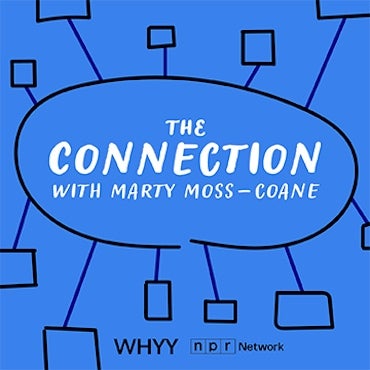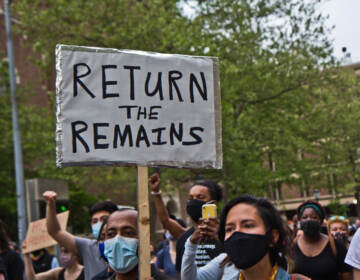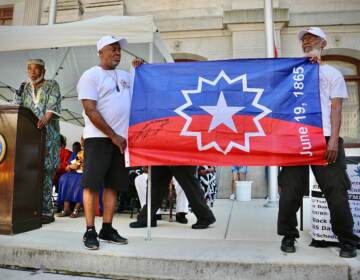Confederate monument melted down to create new, more inclusive public art
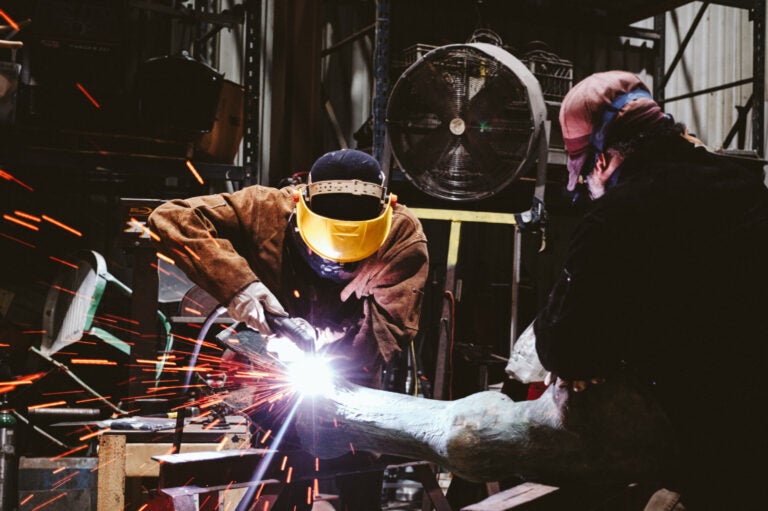
Foundry workers at an undisclosed location begin the long process of disassembling and melting down the statue of Confederate Gen. Robert E. Lee. The statue was a focal point of deadly riots in Charlottesville, Va. in 2017. (Eze Amos/For Swords into Plowshares)
Communities across the American South have removed Confederate monuments from public spaces in recent years. Some have gone to museums, others are locked away in storage.
But one particularly controversial statue from Charlottesville, Va. is on a different journey — to be transformed into something new.
The massive bronze sculpture of Confederate General Robert E. Lee, in uniform, astride his horse Traveller, stood in a downtown Charlottesville park for nearly a century. It was at the center of a deadly white nationalist rally in 2017, when Neo-Nazis and white supremacists tried to stop the city’s plans to remove the statue.
It came down to cheers in July of 2021.
“Today the statue comes down and we are one small step closer to a more perfect union,” said then-mayor Nikuyah Walker.
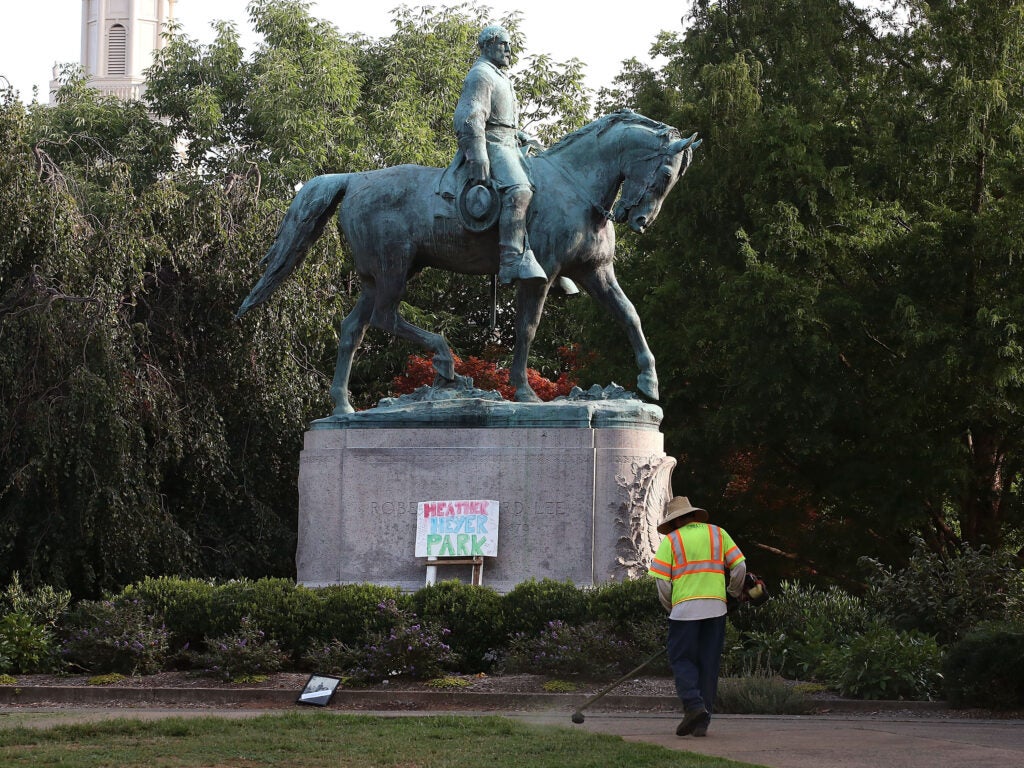
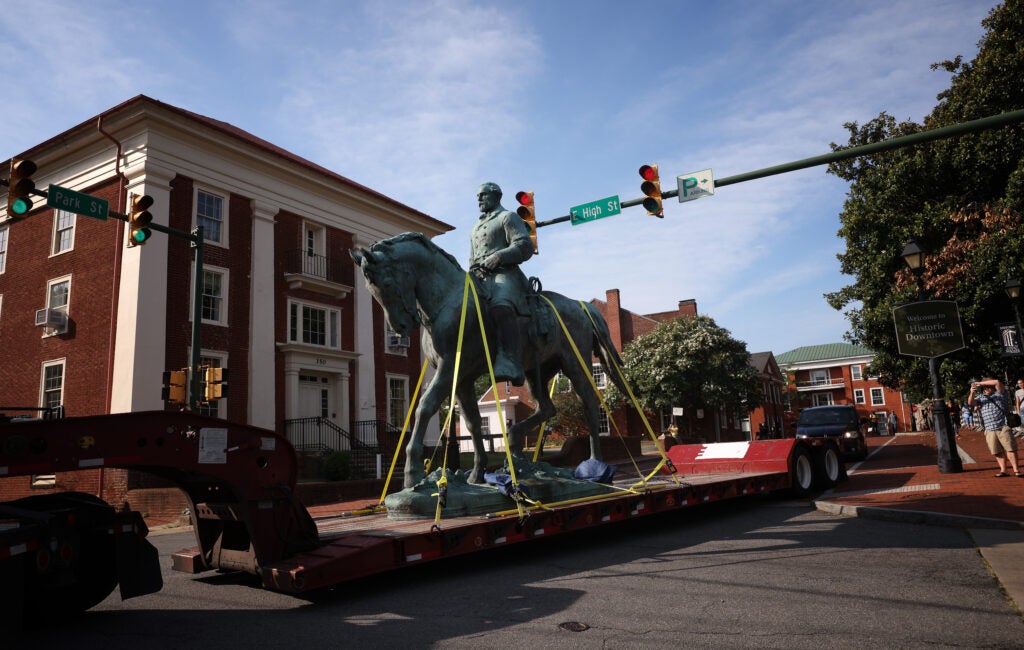
Charlottesville prevailed in a protracted legal battle with the Sons of Confederate Veterans and other groups, and donated the Lee statue to a coalition that proposed to melt it down and create a more inclusive public art installation.
“We want to transform something that has been toxic in the Charlottesville community,” says Jalane Schmidt, a religious studies professor at the University of Virginia and one the project’s organizers. “We want to transform it into a piece of art that the community can be can be proud of, and gather around and not feel excluded or intimidated.”
“People are willing to die for symbols,” Schmidt says. “And as we saw in Charlottesville, they’re willing to kill for them too.”
Lawsuits to stop the project failed, and last weekend organizers moved forward, with great secrecy, to disassemble and melt down the Lee monument.
The work is being done at an out-of-state foundry. NPR agreed not to reveal its location or the identity of the workers because they fear repercussions.
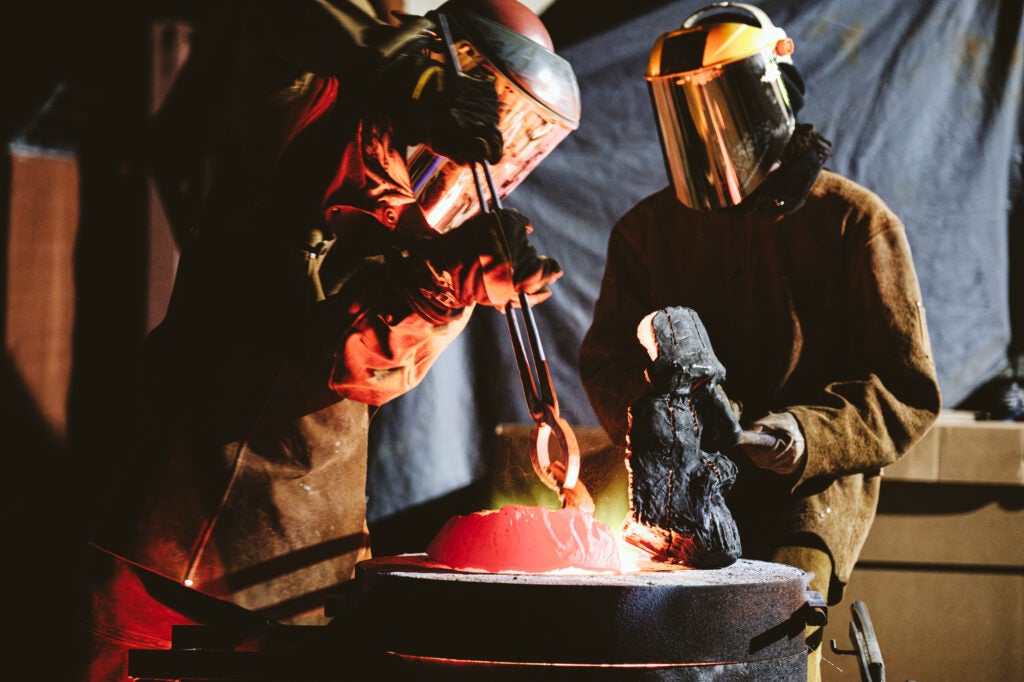
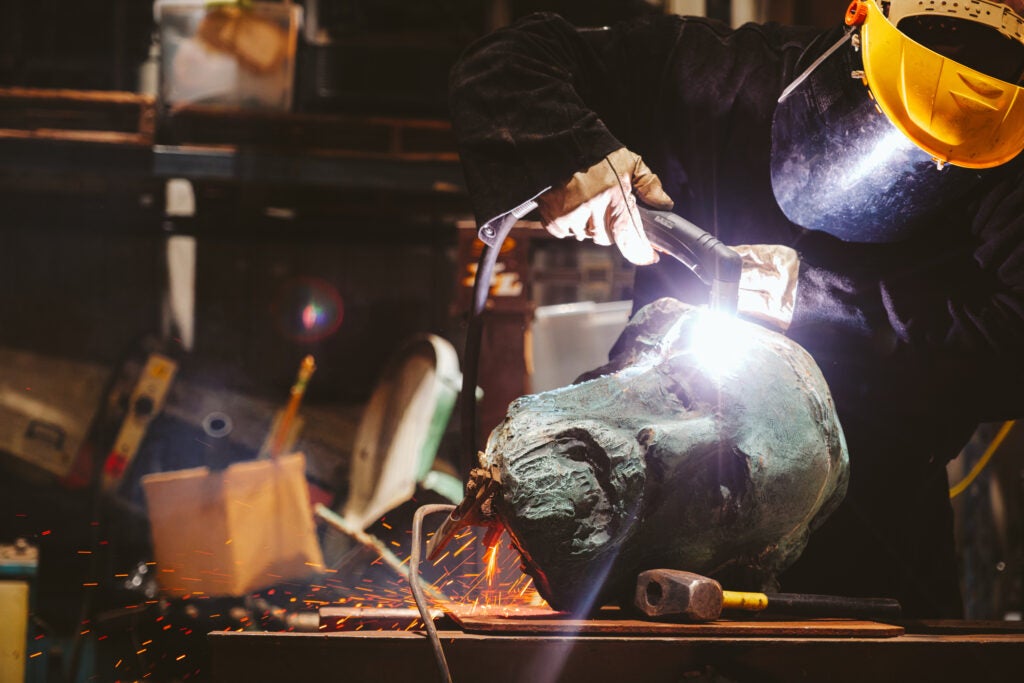
They use a torch to score the head of the statue, in the pattern of a death mask. Lee’s face falls to floor with a loud clank.
The symbolism is poignant for Andrea Douglas, executive director of the Jefferson School African American Cultural Center in Charlottesville, which is leading the project.
“The act of myth-making that has occurred around Robert E. Lee, removing his face is emblematic of the kind of removal of that kind of myth,” Douglas says.
The project is called Swords into Plowshares, taken from a Bible verse in the book of Isaiah.
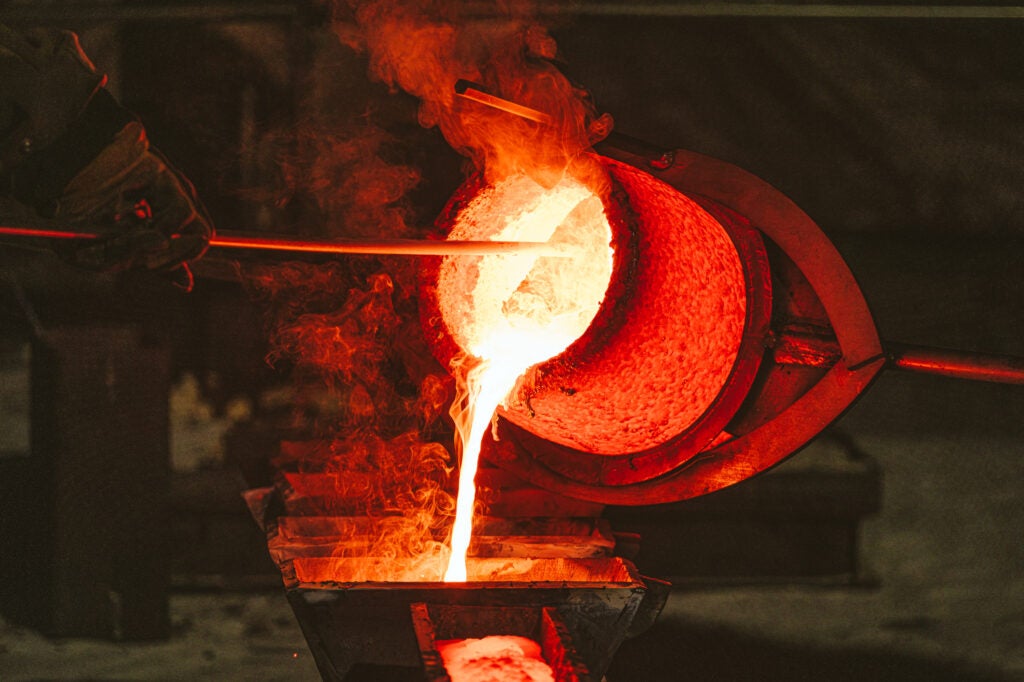
A furnace is ignited and heats to more than 2000 degrees Fahrenheit in a side yard of the foundry. Workers feed pieces of the verdigris statue, including General Lee’s saber, into a large vessel inside called a crucible.
“We are turning swords into something else,” says Douglas. “That saber is the object of violence and it was the object of power, the object of conquest. I think that is an important symbol to really sort of dig into”
Just after nightfall, foundry workers remove the crucible which glows a bright red-orange, and pour the steaming molten bronze into molds.
Jalane Schmidt says the most exciting part for her is seeing the new ingots created.
“Because that’s about going forward,” she says watching the workers flip out the blocks of metal as if turning out a loaf of bread.
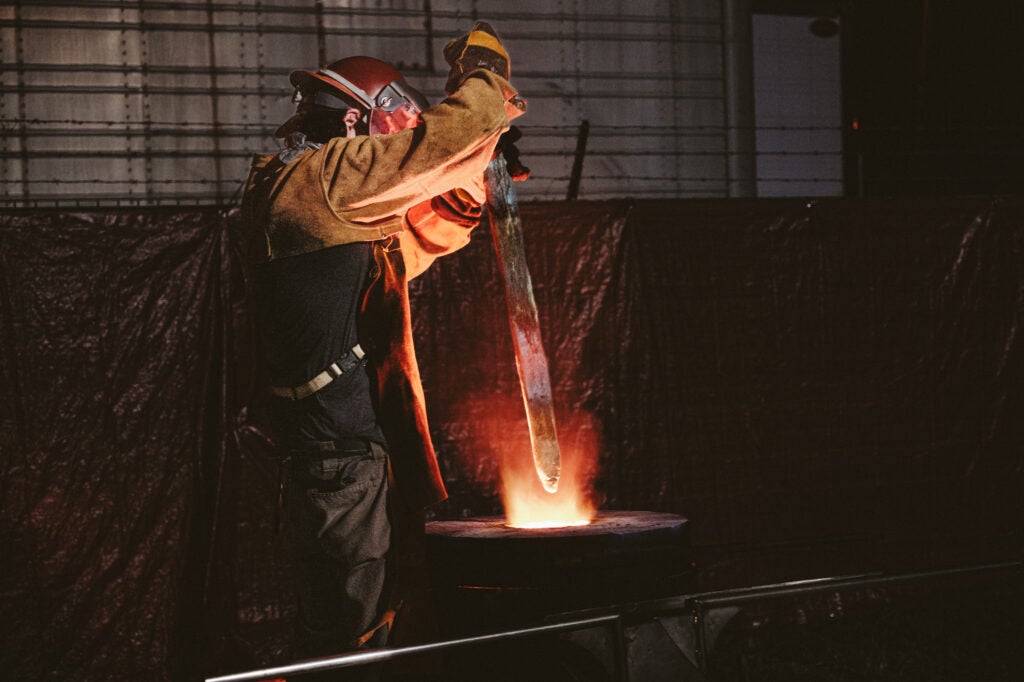
For security reasons, few people were invited to watch. Among them is Ash-Lee Woodard Henderson, who feels the weight of what she’s witnessing.
“Oh, my gosh, as like a proud Black Appalachian who was born and raised in the South, I know this to be more than just a symbolic moment.”
Henderson is co-executive director of the Highlander Research and Education Center in Tennessee which has long been an incubator for labor and civil rights activists. She sees opportunity in this moment.
“I’m most excited about what it looks like to repair — what reparations look like for folks in Charlottesville, what it looks like to tell this new story,” Henderson says. “I think this is a joyful occasion in a really dire strait of political nastiness that we’ve been surviving.”
For the Rev. Isaac Collins, a Methodist minister, the deadly white nationalist violence in Charlottesville in 2017 was a turning point for the nation, and personally.
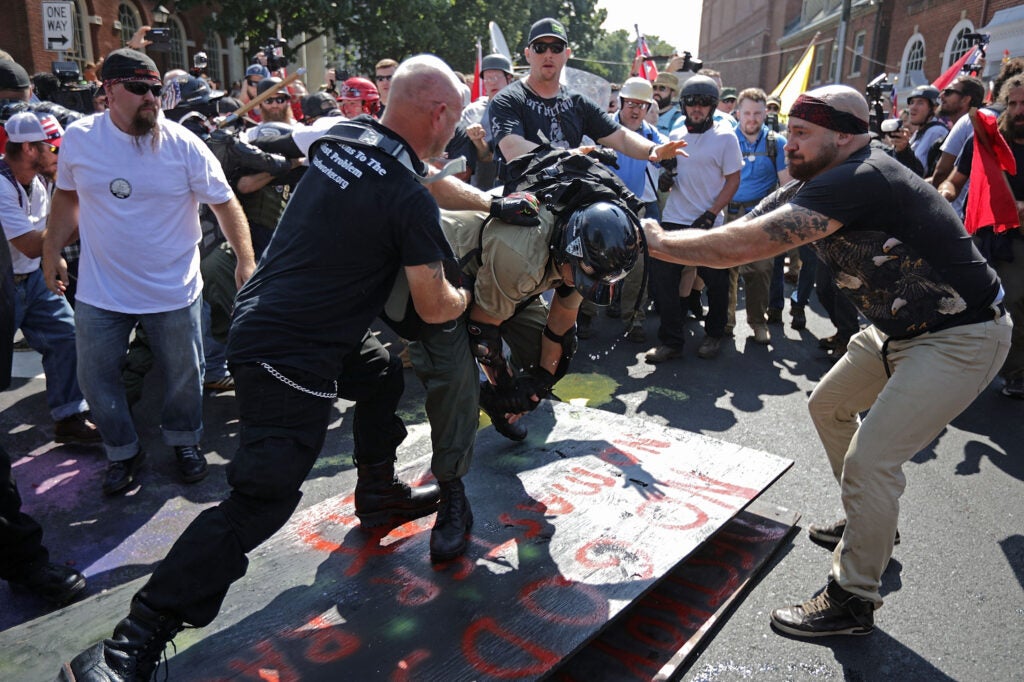
“As a Christian, as a white person in this country, it was a moment that made me reconsider everything about how I understood our country, how I understood my family, how I understood myself and my identity.”
Collins, who pastored a church in Charlottesville at the time, says it is surreal to see the focal point of that episode disassembled.
“I was thinking Humpty Dumpty couldn’t be put back together again,” says Collins. “We still have a lot of work to do, but this statue that has cost us so much, so much violence, so much hurt, so much bloodshed – it’s gone. And it’s never going to be put back together the way it was.”
The melting down of the Lee statue will take weeks. It weighed nearly 10,000 pounds. Organizers say the next step will be choosing an artist who will craft the bronze ingots into a new art form to be displayed in Charlottesville.
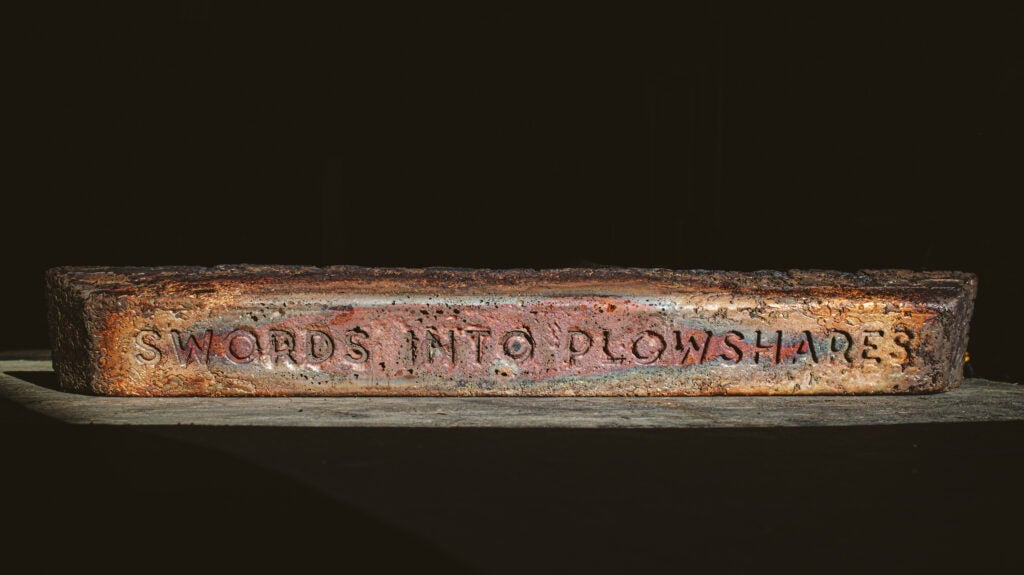
9(MDAzMzI1ODY3MDEyMzkzOTE3NjIxNDg3MQ001))

